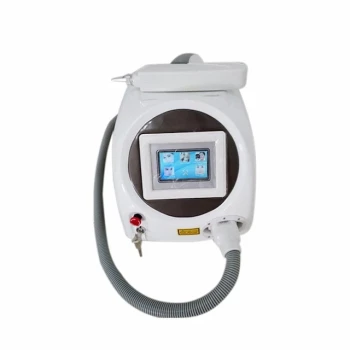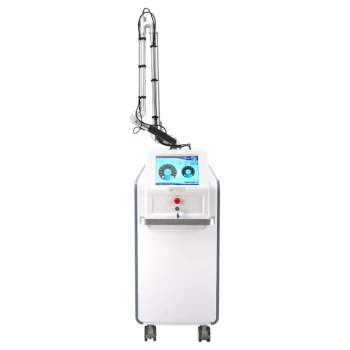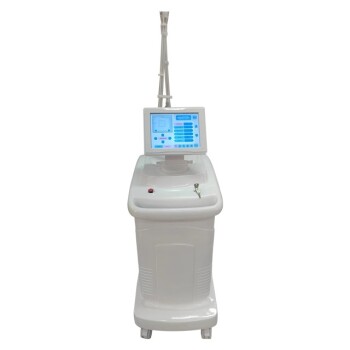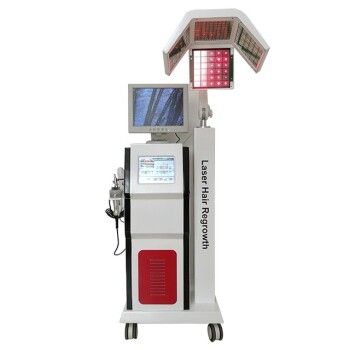The definitive sign you may need a YAG laser procedure is a gradual return of blurry or hazy vision months or years after successful cataract surgery. This is not the cataract returning, but rather a common and treatable condition where the thin membrane behind your new lens implant becomes cloudy.
Your original cataract cannot grow back. The need for a YAG laser arises from a secondary clouding of the lens capsule that was intentionally left in place during surgery, a condition known as Posterior Capsule Opacification (PCO).
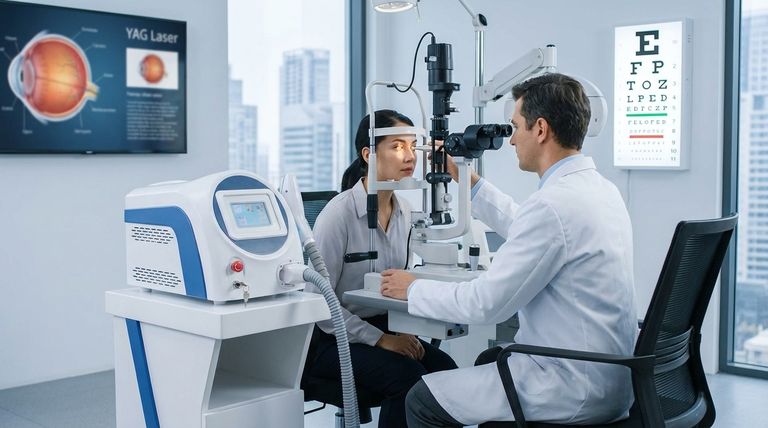
Understanding Why Vision Becomes Cloudy Again
To understand if you need this procedure, you first need to understand what happens after cataract surgery.
The "After-Cataract" That Isn't a Cataract
The term "after-cataract" is a common but misleading name for Posterior Capsule Opacification (PCO). It is the single most common reason for a YAG laser procedure.
During modern cataract surgery, your surgeon removes your eye's cloudy natural lens but leaves the thin, clear outer membrane, called the posterior capsule, intact. This capsule acts as a natural scaffold to hold the new artificial intraocular lens (IOL) in place.
How the Capsule Becomes Cloudy
In many patients, residual microscopic cells from the original lens can remain after surgery. Over time, these cells can grow across the back of the capsule, causing it to become hazy, wrinkled, or frosted.
This opacification blocks and scatters light as it passes through the new lens, creating visual symptoms that are often very similar to the original cataract.
The Key Symptoms Indicating PCO
The decision to proceed with a YAG laser capsulotomy is based on how significantly your vision is impacted. The procedure is indicated when you experience specific, function-limiting symptoms.
Blurry or Hazy Vision
This is the most common complaint. Your vision, which was clear after cataract surgery, may slowly become foggy or "filmy" again, as if you are looking through a dirty window.
Increased Glare and Halos
You may notice a significant increase in glare or halos around lights, especially at night. This can make activities like driving in the dark difficult and unsafe.
Reduced Visual Function
Ultimately, the need for the procedure comes down to function. If the cloudiness prevents you from reading, recognizing faces, or performing daily tasks comfortably, a YAG capsulotomy is necessary.
Understanding the Trade-offs and Considerations
While a YAG capsulotomy is an extremely safe, effective, and common procedure, it's important to have a clear understanding of what it entails.
It Is Not a Second Surgery
A YAG capsulotomy is a non-invasive laser procedure, not a surgical operation. It is performed in a matter of minutes in your ophthalmologist's office, is painless, and does not require any incisions.
How the Laser Works
The Nd:YAG laser is used to create a small, precise opening in the center of the cloudy posterior capsule. This creates a clear path for light to travel to the retina, instantly restoring sharp vision. The rest of the capsule is left untouched.
Potential for "Floaters"
After the procedure, some patients may notice new floaters in their vision. These are typically tiny, harmless pieces of the capsule that have been freed and are now drifting in the eye's vitreous fluid. They usually settle or become less noticeable over time.
Making the Right Choice for Your Goal
The decision to have a YAG laser capsulotomy is a discussion between you and your eye doctor, based entirely on how PCO affects your daily life.
- If your primary focus is restoring the crisp, clear vision you had right after cataract surgery: A YAG capsulotomy is the standard and highly effective solution for PCO.
- If your primary focus is reducing dangerous glare and halos, especially for night driving: This procedure is a clear indication to improve both your visual function and your safety.
- If your vision is only slightly cloudy and doesn't interfere with your daily activities: You and your doctor may decide to monitor the condition, as there is no harm in waiting until the symptoms become more significant.
Consulting your ophthalmologist for a formal diagnosis is the essential next step to confirming PCO and regaining your visual clarity.
Summary Table:
| Symptom | Description | Indicates Need for YAG Laser? |
|---|---|---|
| Blurry/Hazy Vision | Vision becomes foggy, like looking through a dirty window. | Yes, if it impacts daily life. |
| Increased Glare/Halos | Significant glare or halos around lights, especially at night. | Yes, especially for safety (e.g., night driving). |
| Reduced Visual Function | Difficulty reading, recognizing faces, or performing tasks. | Yes, a primary indicator for the procedure. |
BELIS specializes in professional medical aesthetic equipment, serving medical aesthetics clinics and premium beauty salons. If your clinic is looking to enhance patient outcomes with advanced, reliable laser technology, our range of professional YAG lasers can help you deliver precise, non-invasive treatments. Contact our experts today to discuss how our equipment can support your practice's growth and patient satisfaction.
Visual Guide

Related Products
- Q Switch Nd Yag Laser Machine Tattoo Removal Nd Yag Machine
- Clinic Use IPL and SHR Hair Removal Machine with Nd Yag Laser Tattoo Removal
- Pico Laser Tattoo Removal Machine Picosure Picosecond Laser Machine
- Pico Picosecond Laser Machine for Tattoo Removal Picosure Pico Laser
- Diode Laser SHR Trilaser Hair Removal Machine for Clinic Use
People Also Ask
- What are the side effects of Q-switch laser? A Guide to Safe, Effective Treatment
- What are the disadvantages of Q switching? Trade-offs in Pulse Control, Cost, and Beam Quality
- How long does it take to recover from Nd:YAG laser treatment? A Timeline for Every Procedure
- How much does a laser tattoo removal machine cost? Choose the Right Tech for Your Clinic
- What are the disadvantages of Q-switch laser? Managing Risks for Safe Treatment
